The price of a home inspection is...The price of a home inspection varies by many factors, one of the biggest factors is the geographical area. Coastal states are typically higher priced and the in general, the higher the cost of living the higher the home inspection cost will be.
Ground Up Inspection took a poll of from over 100 inspectors across the country. The average price of a home inspection was determined to be $450. In Washington State, the average price of a home inspection is more likely to be $550. The range of pricing in the poll varied from $300 on up to over $700 for a home inspection. The price of a home inspection also often varies by these factors so its good to have this info before calling for a quote:
Some inspectors also offer different "package" pricing options for varying levels of service or additional services such as a sewer inspection, mold testing, pest inspections, etc. When shopping for a home inspection, the price should be considered but be careful when looking for the most affordable. Home Inspectors price their inspections competitive to their market and based on experience and level of service offered. Not all home inspections and inspectors are the same. When making the largest purchase of your life, you should want the best. The price difference of $50-$100 can possibly save you thousands by using an experienced inspector vs a "cheap inspector". Remember, you get what you pay for. Ground Up Inspection Service is operated by Adam Morvee or Bellingham, WA. Serving all of Whatcom and Skagit County since 2014. WA Lic #1266 www.groundupinspection.com 360-927-1723
0 Comments
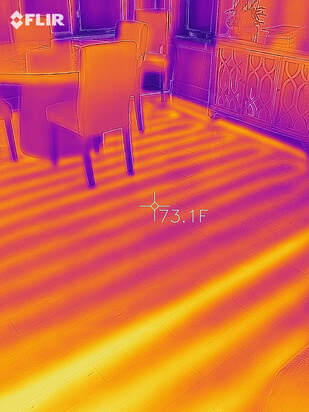 Thermal imaging, known as infrared, is a tool used by Ground Up Inspection regularly during a home inspection. The tool by itself, although neat and fun, is limited by the users training, understanding and scope. The photo here is from an inspection of a radiant hydronic in floor heating system. You can clearly see the hot water pipe locations in the photo. If a leak were present, it may be visible with the infrared camera. Where it's use really shines here in the Pacific Northwest is helping to identify moisture intrusion concerns (i.e. roof, plumbing and building cavity leaks) not visible to the naked eye. Having invested in thermal imaging training and equipment provides additional value to clients at no additional fees. This is one of the many small things we do to strive to provide a high level of service and raise the standards of practice in the industry. Adam Morvee - WA Lic#1266 Ground Up Inspection Service Bellingham, Washington / www.Groundupinspection.com / 360-927-1723 / [email protected] Home Inspection Tips for Home Buyers
• Why you should have a home inspection: A home inspection provides you with information about the home to help determine your financial investment risk. The inspector reports on the condition of visible and accessible systems and components of the home. A home inspection is not a home warranty nor does it guarantee that hidden issues do not exist. The inspector will identify structural concerns, defects, maintenance items and more. Regardless of whether your offer is contingent on a home inspection or how you are a financing, do not skip this important step. 99% of my home inspections have provided value greater than that which was paid, for example, the home inspection costs $500. The inspector finds the home has a plumbing leak and damages cost upward of $5,000. The seller and buyer were unaware of the leak and the buyer negotiates to have the seller perform repairs prior to purchasing. Additional money was also saved from potential additional costs in damages if the leak continued undetected. • How to find a Home Inspector: Many clients call asking for a price quote and say they are shopping around. First thing, going this route is only a disservice to yourself. As with anything in life, you get what you pay for. Likely, going with the cheapest inspector is going to end up costing you in the long run, these inspectors are often less experienced or perform only the minimum as required by the state. Many inspectors offer significant increase in value for not much more cost. Read online reviews, visit inspectors websites and choose the company that is right for you and your purchase, the price differences of $50-100 is nothing when spending hundreds of thousands of dollars. • Questions to ask when calling a Home Inspector.: 1. How long does it take to receive the report? 2. Do you cover appliances and maintenance items? 3. Is the report digital and do you include lots of photos? 4. Do you include thermal imaging (infrared) and is there an added cost? 5. Do you have liability and E&O insurance? 6. Do you perform a walk through review at the completion of the inspection (to me this is one of the most important and valuable steps in the process)? • How much will a Home Inspection cost? Pricing varies from inspector to inspector however, expect to pay between $425-600 for a single family home and between $325-$450 for a townhouses or condo. Prices often vary by size and age so having the information when calling is important. • How long will a Home Inspection take? The inspection process typically takes 2-3 hours for a single family home. When scheduling, be sure to ask the inspector when you should arrive. Usually, arriving at the end of the inspection is recommended. This is the time you will review the findings, walk the property together, talk about future maintenance needs and the inspector will answer any questions you may have. This generally takes an 30 minutes to an hour. Total time at the home is about 2-4 hours. • What should I receive from the Home Inspector? * Comfort * Trust * Honesty * A report should be delivered, ideally within 24 hours. Most often this is sent via e-mail as a web based link or PDF which can then be saved and/or printed. The inspector should also provide you with their contact information for any future home questions or referrals to reputable contractors. A receipt is also often required for your lender and is usually delivered with the report. The inspector should be there for you in the future and be your “go to” for home related questions. When you hire an inspector, don’t think of it as a one- time service, your investing in a lifetime of guidance and support for you and your family. Adam Morvee - WA Lic#1266 Ground Up Inspection Service Bellingham, Washington / www.Groundupinspection.com / 360-927-1723 / [email protected] I found myself recommending that clients purchasing homes have the sewer line inspected. After years of experience and feedback I noticed, there is a lot of value in having the sewer line inspected. Repairs are often in the thousands of dollars and replacement can be up to $25,000 in my experience. Typically, if a buyer could get a plumber to come to the home, coordinate with your realtor for access and perform a scope within your required timeline (typically 10 days from mutual acceptance) clients would pay $350-$450 for this service. Still valuable, however I sought out how to remedy the extra time, stress and cost of this service while maintaining the value. What happened? I flew to Colorado to become Sewer Scope Certified from InterNachi (International Association of Certified Home Inspectors), researched and purchased the most State-of-the-Art equipment and started providing adding value to my clients within weeks. Now, I can perform a sewer camera inspection during your home inspection for a discounted fee. You receive a high quality video copy sent via email link along with a written report included in your digital color photo inspection report. All delivered same day. See the videos below of real clients sewer inspection videos. Adam Morvee - WA Lic#1266 Ground Up Inspection Service Bellingham, Washington / www.Groundupinspection.com / 360-927-1723 / [email protected]  When performing a house inspection I often come across exhaust fans with a 24 or 12 hour timer installed, serving as a simple ventilation system. Typically, these are located in laundry rooms or bathrooms and many homeowners are unaware of their intended purpose. The timer can be configured to operate the fan automatically one or more times per day for a set length of time. These fans help reduce moisture and stale air inside the house. Guidelines vary for when and how long such fans should be configured to operate depending on the size of the house, number of occupants and rating of the fan. When found it is recommended to review instructions or documentation for the timer and configuring the fan as necessary. At a minimum, recommend setting the timer for 1-2 15 or 30 minute intervals per day for improved IAQ (indoor air quality). Adam Morvee - WA Lic#1266 Ground Up Inspection Service Bellingham, Washington / www.Groundupinspection.com / 360-927-1723 / [email protected] Many homeowners don't pay attention to their hot water heater until it doesn't work any longer. This is a common item brought to attention during a home Inspection. Most water heaters good working age is between 10-12 years. When near this age, homeowners should consider budgeting for a replacement or replace soon to prevent unexpected failure and possible further damage if not properly installed with drain pans and proper TPRV (Temperature Pressure Relief Valve) discharge lines. If your hot water heater is due for replacement, contact a local plumber for replacement to ensure it is installed properly and per current building standards and local codes/requirements. Use the link below to help determine the age of your hot water heater.
Water Heater Dating Chart Adam Morvee Is your toilet loose?
About 50% (that's Half!) or more of the homes I inspect have a toilet which is loose where it is secured to the floor. Then about 50% of those found loose have elevated moisture detected in the flooring near the toilet. Yes, that means the toilet is likely leaking at the wax ring. Gross! These leaks are a conducive condition to wood destroying organisms such as rot and wood infesting bugs. The sub-flooring and structural components below could get damaged and result in costly repairs. Checking your toilet is easy, just stand over the toilet lid, squeeze your legs around the base of the toilet and apply pressure left and right to the toilet (I call this the toilet dance). If any movement, contact your local plumber for further evaluation and repair, typically removal of the toilet to inspect the subfloor, replacement of the wax ring and re-securing the toilet to the floor. Preparing for a Home Inspection (Attn: Sellers & Listing Agents)
Questions, concerns or comments? Contact your local area professional Adam Morvee 360-927-1723 www.WAinspection.com Washington Licensed Home Inspector #1266 Often times during an inspection I find a failed or mis-wired GFCI receptacle (outlet) in a home. After getting asked many times "What are they?" and "what do they do?" I figured id share some info for anyone curious about these devices you likely have in your own home. If you don't have any GFCI receptacles in your home, this may encourage you to have them installed. What is a GFCI? History
|
AuthorWrite something about yourself. No need to be fancy, just an overview. Adam Morvee
|
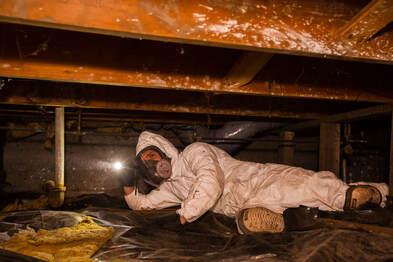
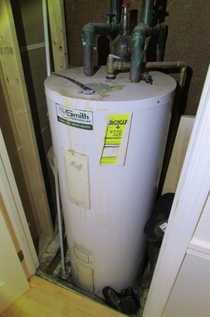
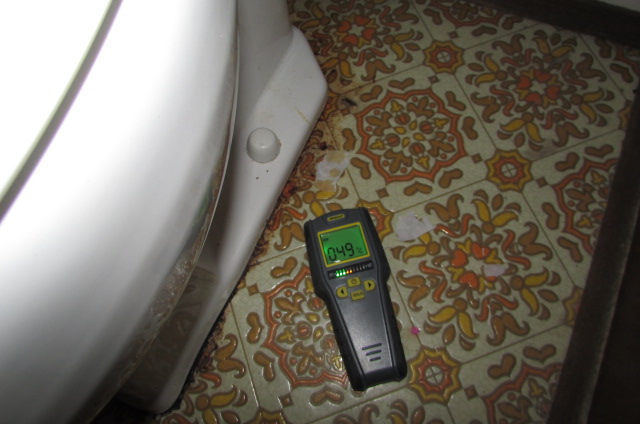
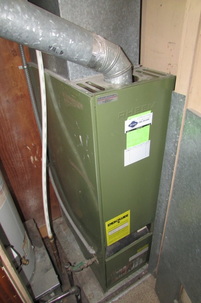
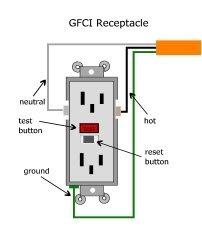
 RSS Feed
RSS Feed
